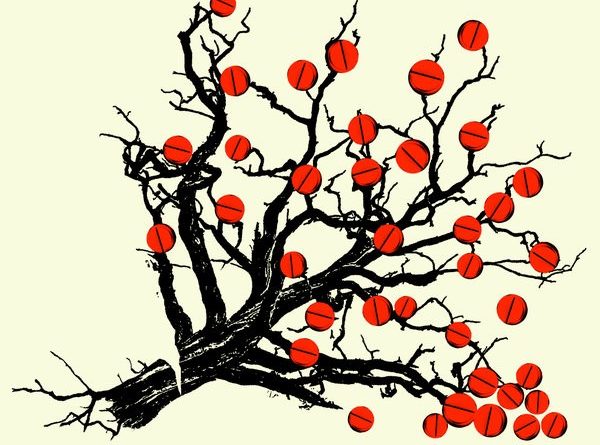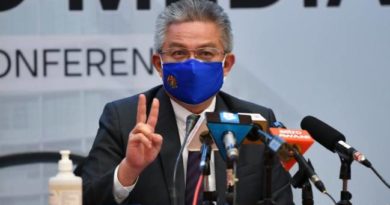BOOKS-NONFICTION : “BOTTLE OF LIES” – The Inside Story of the Generic Drug Boom -A New Book Argues That Generic Drugs Are Poisoning Us
BOTTLE OF LIES
The Inside Story of the Generic Drug Boom
By Katherine Eban
Who would ever guess that Gandhi helped start an industry whose corruption now plagues us all? Yet here he is, early in Katherine Eban’s “Bottle of Lies,” barefoot in his Ahmedabad ashram, urging the chemist Khwaja Abdul Hamied (a fellow Indian nationalist) to copy Western drugs as a way to bring affordable medicine to India’s masses. Thus the generic drug industry began.
At first, things went nicely. Hamied’s business, Cipla, founded in 1935, quickly grew adept at reverse-engineering drug formulas, and by midcentury it was supplying India and other countries with low-cost versions of important Western medicines. In the 1980s, when the United States began allowing the import of such generics, Cipla and other generic makers became heroes to critics of Big Pharma. This admiration grew when Cipla revealed in the early 2000s that it would provide an H.I.V. drug that cost roughly a dollar a day — about 4 percent of Big Pharma’s price — to tens of millions of Africans who would otherwise go untreated. Gandhi’s dream had gone global.

.
.
ADS by Cloud 9:
.
– SPACE RESERVE FOR YOUR ADVERTISEMENT –
.
Alas, Cipla’s triumph is pretty much the last feel-good moment in this lively but dark story. Cipla, almost a tenth the size of Merck, has kept its nose clean. But much of the wider generics industry is harming and sometimes killing patients by making drugs quick and dirty and erecting facades of legitimacy to fool regulators. This booming industry, with most production coming out of lightly regulated plants in India and China, is pumping bad medicine into unsuspecting patients in every corner of the globe.
Eban’s gripping book lays bare how Gandhi’s well-intentioned local action became hellish global fraud. At once a tale of tragic heroism and a sprawling but concisely written epic, it shows how an industry founded to counteract Big Pharma is now uneasily merging with it, creating a two-headed monster whose tentacles ensnare both hapless victims and would-be regulators.
.

.
.
ADS by Cloud 9:
.
– SPACE RESERVE FOR YOUR ADVERTISEMENT –
.
The book’s central thread is a David and Goliath whistle-blower story, as a young engineer and executive named Dinesh Thakur tries to stop Ranbaxy Laboratories, the Indian generics giant that employs him, from continuing (and covering up) its careless drug manufacture. A native of India who entered pharmaceuticals after doing graduate work in the United States, Thakur has a sharp sense of ethics and a meticulous way of thinking that seem well suited to his job. For the key to safe manufacture is to closely monitor and control every aspect of drug production — and document everything — to ensure and show that each pill, vial or capsule accurately reproduces the formula. “All medicines are poisonous,” observes Bright Simons, the Ghanaian creator of a drug verification program. “It’s only under the most controlled conditions that they do good.”
When Thakur learns that Ranbaxy is cutting corners and hiding it, he is horrified. His horror doubles when he learns his company is sending faulty drugs to Africa, where they’ll likely go undetected. Ultimately he quits — and then, aware he’s taking a big personal risk, spills everything he knows to the F.D.A.

.
.
ADS by Cloud 9:
.
– SPACE RESERVE FOR YOUR ADVERTISEMENT –
.
[ Read Katherine Eban’s Op-Ed about the trustworthiness of generic drugs. ]
Eban skillfully unspools the slow, intricate, cat-and-mouse investigation that follows, as well as an armed raid of corporate headquarters (“Step away from your desk”), the discovery of astounding levels of deceit and damage, and finally a three-front legal battle, as Ranbaxy fights the F.D.A., the United States attorney Rod Rosenstein and the lawyer Thakur retains so he won’t get skinned alive. This narrative, spread episodically throughout, is riveting and increasingly foreboding. Occasionally a sentence is flat-footed or unfresh. But Eban’s pacing, along with a structure that makes this astonishingly complex story easy to follow, gives the book a rough, unforced elegance. Her portrayal of Thakur’s plight will set crawling the skin of anyone who has alerted regulators to horrid misdeeds only to find those regulators not just timid but outright protective of the villains.
.

.
.
ADS by Cloud 9:
.
– SPACE RESERVE FOR YOUR ADVERTISEMENT –
.
Thakur’s story stuns with how utterly corrupt an entire company can become. Both his and the book’s broader account of the industry, meanwhile, show how a quieter sort of corruption — an erosion of will and mission — has neutralized the industry’s overseers.
The F.D.A. long regulated the American industry by making surprise site visits to inspect production and testing rooms and exhaustively checking records. By Eban’s account, this worked fairly well in the United States. But it failed spectacularly in the Indian and then Chinese factories that, starting in the 1980s, were making and exporting more and more generics.
.

.
.
ADS by Cloud 9:
.
– SPACE RESERVE FOR YOUR ADVERTISEMENT –
.
Unlike American plants, which matured in an environment where constant oversight made shortcuts risky, the Indian industry evolved in a culture in which outwitting inefficient bureaucracies was an essential skill. There the most rational approach was to stress speed and production over accuracy and quality — and deal with the occasional inspector with some sleight of hand and greasing of palm.
The F.D.A. was utterly unprepared for this, and largely blind as well to the implications of both its own and the Indian industry’s cultural assumptions. Lost, it tried to get by, Eban writes, with “a system built on wishful thinking and infrequent scrutiny.” Especially early on, inspections of foreign factories were rare — as few as 100 a year in the 1990s, which worked out to a rate of one inspection per plant every 11 years. These inspections were seldom surprises, because the State Department, valuing good relations over good drugs, asked the F.D.A. to give plants several weeks’ notice. So instead of flashing a badge and roaming at will, inspectors would be fetched from their hotels by drug-company cars and escorted into receptions and plant tours hosted by up to a dozen corporate officers flown in from headquarters. Meanwhile, as more aggressive inspectors eventually learned, a second set of corporate officers would be in back rooms and production areas destroying failed quality test results and fabricating documents showing successful tests. Some plants even built, just for these inspections, fake production and testing areas that were kept pristine while the drugs were made in substandard conditions elsewhere.
.

.
.
ADS by Cloud 9:
.
– SPACE RESERVE FOR YOUR ADVERTISEMENT –
.
These high jinks read like farce but hit like poison, as tainted drugs daily enter patients’ bloodstreams worldwide. In Africa, which the companies consider the safest place to send faulty drugs, doctors regularly find that drugs for AIDS, bacterial infections and other conditions are underpowered. In the United States, imports from India now make up 40 percent of all generics used, and 80 percent of the active ingredients used in both generic and brand-name medications come from India and China. In 2007, when scores of kidney patients across the United States died from allergic reactions after dialysis, experts traced the cause to a contaminant in the blood thinner heparin provided by a Chinese plant contracted by Baxter, the leading American supplier. The F.D.A. had never inspected this plant. Someone there, it seems, had intentionally added a chemical to stretch the drug’s yield and profitability.
The prognosis is grim. The World Health Organization has established, and some plants follow, a definition of “good management practice” for drug manufacture, but no international regulatory body exists to enforce it. The F.D.A. is overmatched and uninspired. And with Big Pharma using saturation advertising to drive demand for its expensive drugs, an overmedicalized society is demanding more and more drugs sooner and cheaper. At the same time, even brand-name companies are increasingly hiring poorly regulated Indian and Asian plants to make their ingredients or formulations — just as the generic industry is being prosecuted for price-fixing. The entire drug supply, as one prominent American cardiologist concluded, is “sick.”
.

.
.
ADS by Cloud 9:
.
– SPACE RESERVE FOR YOUR ADVERTISEMENT –
.
“Bottle of Lies” is an invaluable exposé, a reportorial tour de force and a well-turned epic. Is it news you can use? I can’t give medical advice. Our best medicines are indeed wondrous; many of us owe our lives to them. But I can relate that Eban quotes inspector after inspector saying that they themselves fill only the most essential prescriptions — and will pay anything to avoid taking a drug made overseas. They’ve seen how those drugs are produced, and they live in fear of them.
.
– SPACE RESERVE FOR YOUR ADVERTISEMENT –
David Dobbs is the author of “My Mother’s Lover,” a memoir of his mother’s long-secret wartime affair.

.
.
.
 All photographs, news, editorials, opinions, information, data, others have been taken from the Internet ..aseanews.net | [email protected] | For comments, Email to : BOOKRICH @ yahoo.com / Contributor
All photographs, news, editorials, opinions, information, data, others have been taken from the Internet ..aseanews.net | [email protected] | For comments, Email to : BOOKRICH @ yahoo.com / Contributor









